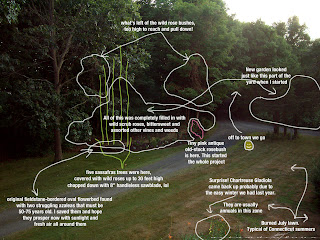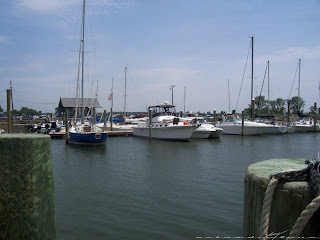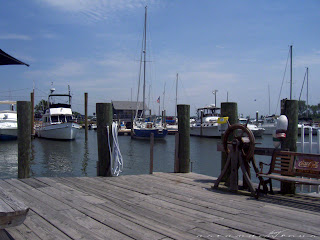My new golden yellow Butterfly bush, (buddleia), see story below of my newest garden. According to what I've read, these yellow varieties don't attract as many butterflies as the lavender/pink ones, but they do attract honeybees. Personal experience though, shows lots of butterflies around them.
One of my wild thistles first flowers this year. This is in my new garden, read story below, and I've planted zinnias and all sorts of annuals around it. It's almost 5 feet tall right now. Hummingbirds, and birds in general, love these misunderstood wildflowers!

LOTSA HARD WORK, lol—I just had to get outside about a week ago and do some manual labor! I chose a piece of Pink Garden's property near the edge of the lawn that was completely covered with wildroses and other vines and thickets. I've written before about a small pink tearose that I found underneath those thickets a couple of years ago, so I decided it was time to "trim" all around it. Well, one thing led to another, and in a few 100° days I had cleaned off about 60 feet of the previously impenetrable wall of green. I cut down five small Sassafras trees and pulled down vines 25-30 feet up into the trees. I found a small semi-circle of fieldstones, an early garden probably from the Depression era or earlier. There were two struggling and "deformed" Azaleas in it. They had to grow about 4 feet along the ground, without leaves, before they had any sunlight from those wild thickets, but I saved them and I swear they are sending out new shoots all along those limbs now that they have sunlight and fresh air. I couldn't drag all the dying vines and limbs very far into the woods, they're just as thick with growth as what I cut down, but I bought some hay and straw and just covered some of it over until it really dies down. I think I'll be able to more easily clean up the "back" of this new garden this winter when the growth dies down behind it.
I've put in perennials like a yellow butterfly bush, day lilies, hostas, hydrangea, violets and summer phlox, and filled in with bright annuals such as marigolds, petunias, impatiens, and zinnias. As it matures, I'll keep taking photos!
This is the "long view" from the roof of my porch. The new garden is in the center, just to the left of the driveway. Previously the brambles reached into the trees and came out to the edge of the driveway.
This is a "schematic" of what I did, lol. I hope it enlarges enough in Blogger to be read!
I neglected to take a "before" photo, but this is about 50 feet away, further down the drive, and looks exactly like the area I cleaned off. That thick greenery consists of wild scrub roses primarily, with sassafras saplings, milkweeds and all sorts of plants that have had the past 75 years to grow wherever they wanted to.
More Views of the New Flower Garden
Perennials mixed with annuals. If the "critters" don't devour these tender young plants, and they've started already, I'm hoping that the annuals will really fill out by September.
Looking a bit sparse right now, my gardening "style" is really to have crowded gardens, with lots going on. A time, and budget permits, I'll keep adding one perennial for each annual I plant.
Wildflowers, like this almost 5-foot thistle, coexist with perennials and annuals in my gardens.
Zinnias are one of my favorite annuals. I have several in my cutting garden, nestled within my vegetable garden, but I also have them in several flowerbeds. Their vibrant colors and textures make perfectly lovely late summer arrangements.
Mentioned in my post above, this is the decades-old Azalea I found after cleaning out the brambles. Notice how it had to grow sideways along the ground for a few feet in order to find sunshine and fresh air from under the thicket. Those stumps behind it are the Sassafras trees and some of the wild scrub roses I chopped down and cleared away. Even though it's only been a couple of weeks, I see teeny-tiny new growth coming from the bare limbs, which finally have the air and light they need. The rocks at the base are part of the old fieldstone border that had been hiding under the overgrowth.
I planted an Impatiens under the azalea. Look at how green and healthy the 50-60 year old azalea looks now that it can be seen and appreciated again!




















































